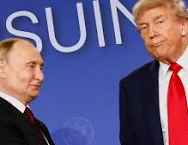On October 18, 2025, international attention settled on what was billed as a potential landmark summit in Budapest between U.S. President Donald Trump and Russian President Vladimir Putin, intended to address the ongoing war in Ukraine. The meeting, to be hosted in Hungary, carried high hopes of a diplomatic breakthrough but quickly ran into difficult practical, legal and political obstacles that have cast doubt on its timing and utility.
The summit was announced shortly after a joint statement by Trump and Putin, and by Hungary’s Prime Minister Viktor Orban confirming Budapest as the venue. The choice of Hungary was significant: its government has maintained comparatively friendly relations with Russia, positioning Budapest as a neutral ground for dialogue. Analysts described the move as a signal that major powers are seeking alternative diplomatic channels beyond traditional Western-EU frameworks.
At the heart of the proposed summit is the question of how the Ukraine war might be brought toward some form of resolution. President Trump has publicly argued that dialogue with Russia could yield quicker results than protracted conflict, while President Putin is under pressure from military and economic burdens and EU-US sanctions. The summit therefore offered a rare opportunity for mutual face-to-face discussion at the highest level.
Yet despite the momentum, significant stumbling blocks emerged almost immediately. One major concern revolves around President Putin’s travel logistics: as a Russian national subject to an arrest warrant from the International Criminal Court (ICC) over alleged war crimes, his passage through European airspace has become deeply contentious. Poland, a neighbouring country along likely routes, issued a formal warning that if Putin’s aircraft entered its airspace, Warsaw might be obligated under ICC rules to intercept the plane. This legal dimension prompted uncertainty about how Putin could safely attend the summit.
Another challenge lies in the substance: the two sides disagree fundamentally over whether a cease-fire should set the table for talks, or whether the conflict must be won or stabilised first. Russia has rejected proposals for an immediate cease-fire, insisting on more favourable territorial terms. Ukraine and many of its Western backers oppose any arrangement that would reward aggression or permit Russia to hold captured territory. With such strategic differences unresolved, the summit’s agenda appears more aspirational than operational.
Furthermore, European states expressed caution about circumventing established multilateral frameworks (NATO, the EU, the G7) that have managed sanctions, military aid, and diplomatic strategy toward the Russian-Ukraine war. Some EU officials publicly questioned whether a bilateral U.S.–Russia meeting, held in Hungary and potentially excluding Ukraine from full participation, would undercut allied cohesion or create a parallel process lacking accountability.
Meanwhile, Hungary’s role is under scrutiny. While Budapest has offered to host and facilitate the meeting, its willingness to act independently of EU concerns places it in a diplomatic tight-rope: on one hand, presenting itself as a peacemaker, on the other, navigating pressure from its EU partners who remain sceptical of Russia’s aims.
From a broader view, the proposed summit highlights deeper trends in global diplomacy: the increasing role of non-traditional venues, the desire of major powers to bypass stalemates, and the difficulty of aligning national-level talks with multilateral institutions and broader alliances. For the United States, Trump’s willingness to meet Putin reflects both a shift from previous administrations and a gamble on individual diplomacy. For Russia, the summit offered recognition and legitimacy, but also exposure to legal and political risk.
In practical terms, the summit’s success (or failure) will be judged by what follows rather than the optics alone. Key metrics include whether Ukraine is included meaningfully in negotiations, whether any agreement provides enforceable guarantees (military, economic or legal), and whether allied states view the process as complementary to, rather than undermining, existing strategies. The logistical and legal challenges highlighted thus far suggest that even if the meeting occurs, it may serve more as a symbolic moment than a substantive turning point unless those issues are addressed.
In conclusion, the Budapest summit between Trump and Putin represents an ambitious attempt to shift the dynamics of one of the most difficult conflicts in Europe today. It carries significant symbolic weight, but also considerable risk. The legal obstacles, strategic divergences and alliance-management questions suggest that the summit’s true impact will depend on follow-through, and whether it can harmonise with the broader architecture of international diplomacy rather than stand apart from it.

